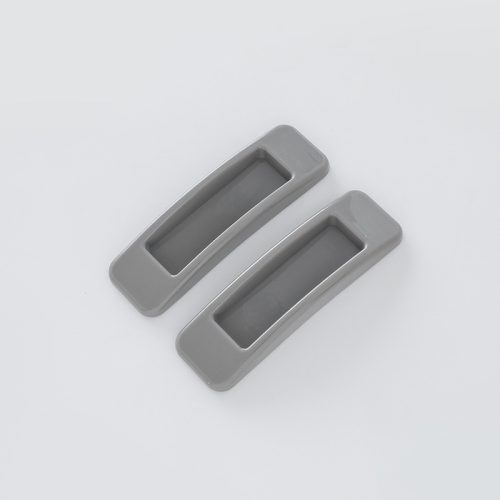Designing plastic tool handles for durability involves a combination of material selection, ergonomic considerations, and structural design. Here are some key factors to keep in mind when designing plastic tool handles for optimal durability:
- Material Selection: Choose a plastic material that offers a good balance of strength, toughness, and chemical resistance. Common choices include ABS, polycarbonate, nylon, and polypropylene. Consider the specific requirements of the tool and the types of stresses the handle will experience.
- Ergonomics: Design the handle with ergonomics in mind. The handle’s shape and contour should provide a comfortable and secure grip, reducing the risk of strain or fatigue during extended use. Ergonomic handles also help distribute forces evenly across the hand.
- Texture and Grip: Incorporate textures, patterns, or non-slip surfaces on the handle to enhance grip, especially in wet or oily conditions. A good grip minimizes the chances of slipping and dropping the tool, which can contribute to premature wear and damage.
- Reinforcements: Consider reinforcing critical areas of the handle, such as where it attaches to the tool body. Reinforcements like ribs, grooves, or thicker sections can help distribute stresses and prevent localized failures.
- Impact Resistance: Design the handle to withstand impact and shock loads. Utilize features like shock-absorbing materials, cushioned zones, or specially engineered geometries to reduce the transfer of impact forces to the plastic.
- Chemical Resistance: If the tool is likely to be exposed to chemicals, choose a plastic material that is resistant to the specific chemicals it will encounter. Chemical exposure can degrade the plastic and compromise its durability.
- Temperature Stability: Consider the temperature range in which the tool will be used. Some plastics can become brittle at low temperatures or degrade at high temperatures, affecting their durability.
- Fatigue Resistance: Design the handle to minimize stress concentrations and prevent fatigue failures. Smooth transitions between different sections of the handle can help prevent cracks from forming due to repeated loading.
- Vibration Damping: If the tool generates vibrations during use, design the handle to absorb or dampen these vibrations. This can prevent premature wear and discomfort for the user.
- Quality Control and Testing: Implement thorough quality control measures during manufacturing to ensure consistency and reliability. Perform tests to simulate real-world usage scenarios, including impact, cyclic loading, and environmental exposure, to assess the handle’s durability.
- User Feedback: Gather feedback from users and professionals who regularly use tools. This feedback can provide valuable insights into areas where improvements can be made to enhance durability and user satisfaction.
- Manufacturability: Consider the manufacturability of the design. Complex shapes or features may be difficult or expensive to produce, affecting both cost and durability.
By considering these factors and collaborating with experts in materials science, design engineering, and manufacturing, you can create plastic tool handles that are not only durable but also comfortable and functional for users in various working conditions.


